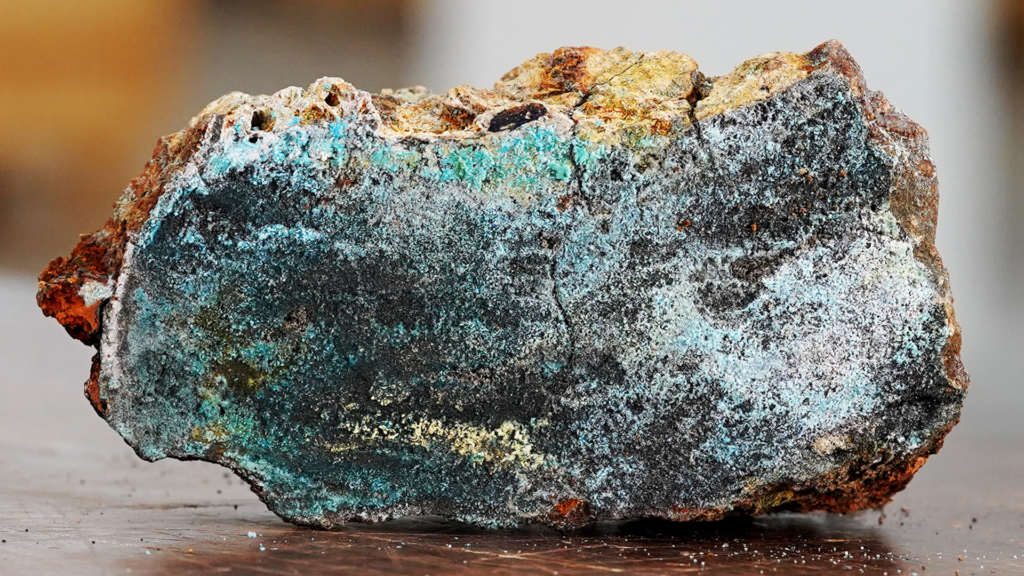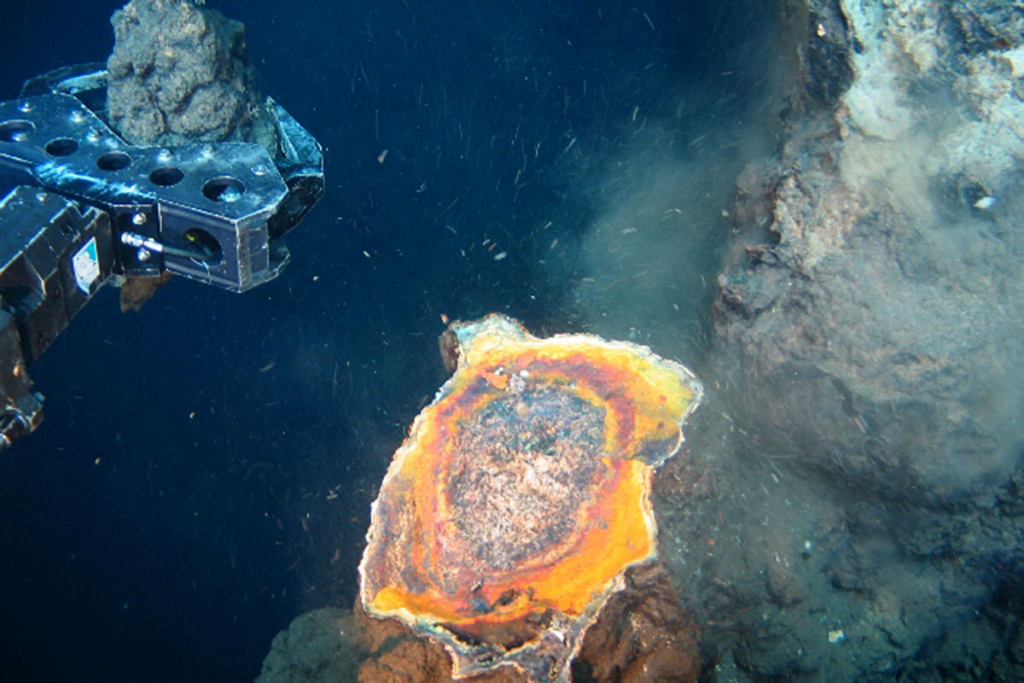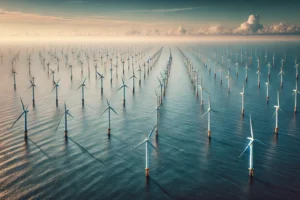The oceans cover 71% of the Earth, and they hold valuable minerals in the seabed. Because of technology and human ingenuity, we can now consider mining these minerals from deep-sea areas. This article explores the significance of seabed minerals, the advanced technologies driving deep-sea mining, environmental concerns, and what the future holds for this industry.
The Significance of Seabed Minerals
1. Abundance and Diversity of Seabed Minerals
Seabed minerals refer to a wide range of valuable resources found beneath the ocean floor, including polymetallic nodules, ferromanganese crusts, seafloor massive sulfides (SMS), and cobalt-rich ferromanganese deposits. Each type of seabed mineral has its unique composition and distribution. Polymetallic nodules, for example, are small potato-sized lumps found on the ocean floor, containing high concentrations of valuable metals like nickel, copper, and cobalt.
Ferromanganese crusts, on the other hand, are hard formations found on seamounts and contain significant amounts of cobalt, rare earth elements, and platinum group metals. Seafloor massive sulfides are hydrothermal vent deposits that are rich in copper, zinc, gold, and silver. Cobalt-rich ferromanganese deposits, as the name suggests, are high in cobalt content, an essential element for battery technologies.

2. Importance for Modern Technologies:
These seabed minerals are increasingly critical in driving technological innovations and ensuring a sustainable future. Copper and nickel are known conductors, making them essential components for electronics and batteries. Cobalt is important for lithium-ion batteries, which power electric vehicles and store renewable energy. Rare earth elements are highly indispensable in producing high-tech equipment like wind turbines, solar panels, and smartphones.
3. Reducing Dependency on Land-Based Resources
The increasing demand for technology-driven products has put a strain on land-based mineral reserves. Some of these resources are limited and finite, leading to concerns about potential shortages in the future. Seabed minerals offer an alternative and substantial source of these vital elements. By developing deep-sea mining technologies, we can access and utilize these resources, reducing our dependence on terrestrial mines and ensuring a more balanced and secure global resource supply.
4. Global Resource Security
Diversifying our sources of valuable minerals through deep-sea mining can play a significant role in enhancing global resource security. Reliance on a limited number of land-based mines can lead to geopolitical tensions and supply chain disruptions. By tapping into seabed minerals, we can mitigate these risks and create a more resilient and stable resource landscape.
While seabed minerals present a promising opportunity for addressing resource challenges, it is essential to approach deep-sea mining with caution and responsibility.
Advancements in Deep-Sea Mining Technologies
As we move further into the future, people have devised various ways in which we can use different technologies to enhance underwater mining.
Robotic Systems and Automation
The extreme depths of the ocean present challenges for human-operated mining operations. Cutting-edge robotic systems and automation technologies are making it possible to remotely explore, extract, and process seabed minerals. These robots are equipped with advanced sensors, artificial intelligence (AI), and machine learning capabilities, enabling precise and efficient operations in harsh underwater conditions.

Deep-Sea Drilling and Excavation Techniques
Innovative drilling and excavation methods are revolutionizing deep-sea mining. Hydraulic suction systems, remotely operated vehicles (ROVs), and subsea dredging tools are examples of breakthrough technologies that enable efficient mineral recovery while minimizing environmental disturbances.
Sustainable Energy Solutions
Deep-sea mining operations require a substantial amount of energy. Integrating renewable energy sources, such as wave and tidal energy, into mining vessels can minimize the ecological footprint of these endeavors and make them more sustainable in the long run.
Environmental Concerns and Mitigation Strategies
A number of environmental concerns surrounding deep-sea mining arise due to potential impacts on marine ecosystems, water quality, and biodiversity. As we delve into these issues, it becomes a matter of urgency to implement effective mitigation strategies to minimize any adverse effects on the delicate underwater environment.
Potential Impact on Biodiversity:
The deep sea is home to unique and delicate ecosystems. Till date, many of these still remain largely unexplored and undiscovered by humans. Seabed mining activities have the potential to disrupt these ecosystems, leading to the loss of biodiversity and possible extinction of species. To address this concern, rigorous Environmental Impact Assessments (EIAs) must be conducted before any mining operation is undertaken. These assessments help identify and understand the potential risks and develop measures to protect sensitive areas and species.
Sediment Plumes and Water Quality
During mining operations, sediment plumes can be generated, affecting water quality and marine life over considerable distances. Sediment can smother benthic habitats and alter the chemical balance of the water, impacting marine organisms’ ability to survive and reproduce. To mitigate this risk, advanced sediment management systems should be employed to minimize the dispersion of sediments. Regular monitoring of water quality and marine life in the surrounding areas can also help assess the impact and adjust mining operations accordingly.
Deep-Sea Hydrothermal Vent Ecosystems
Hydrothermal vents, found in the deep ocean bed, support specialized ecosystems that rely on chemosynthesis rather than sunlight for energy as sunlight cannot reach the deeper parts of the vast seas. These ecosystems are vulnerable to disturbance, and hence, mining activities in these areas can cause irreversible damage. Protecting such delicate habitats may involve designating conservation zones or buffer areas around hydrothermal vents to prevent any direct impact from mining activities.
Research and Monitoring
Continued research is vital to gain a better understanding of the deep-sea environment and potential ecological impacts. Conducting long-term monitoring programs can provide valuable data to assess the effectiveness of mitigation measures and identify any emerging environmental concerns.
International Regulations and Governance
The global nature of the ocean demands robust international regulations and governance frameworks to manage deep-sea mining responsibly. The International Seabed Authority (ISA) plays a key role in establishing rules and guidelines for mining operations in the international seabed area.
It will be very challenging and impossible to fully mitigate the effects of deep-sea mining, let alone restore ecosystems in a post-mining scenario. Deep-sea mining will require far more baseline knowledge than is currently available, as well as knowledge of the technology that would be used and its direct and indirect effects. Even gaining an understanding of the potential biodiversity loss that could be caused by deep-sea mining will require this knowledge. Our understanding of the oceans still has many fundamental gaps, particularly in regard to delicate deep-sea species like cold water corals, crabs, and shrimp. Weakly understood connections exist between deep seabed habitats and overall ecosystem functioning.
The Future Outlook of Deep-Sea Mining
- Balancing Resource Demand and Environmental Preservation
The successful future of deep-sea mining relies on striking a balance between meeting resource demands and ensuring responsible environmental stewardship. Collaboration between governments, industries, scientists, and environmental organizations will be crucial in achieving this equilibrium. - Technological Advancements and Research
Continued research and technological innovations will drive the growth of deep-sea mining. Governments and private companies are investing heavily in R&D to develop more sustainable and efficient mining solutions.

Potential Economic Impact of Seabed Minerals
- Job Creation and Economic Growth
The development of the deep-sea mining industry has the potential to create significant job opportunities across various sectors. Not only will there be a demand for skilled professionals in engineering, robotics, and marine sciences, but ancillary industries like logistics, manufacturing, and support services will also experience growth. This economic stimulation can benefit both developed and developing nations, particularly those with coastal access to potential mining sites. - Revenue Generation and Resource Security
Seabed minerals offer a unique revenue stream for countries with access to mineral-rich territories. By responsibly extracting and selling these resources, nations can generate substantial income and potentially reduce their reliance on other revenue sources. Moreover, securing access to critical minerals through deep-sea mining can enhance a nation’s resource security, reducing vulnerability to supply chain disruptions and geopolitical tensions associated with land-based mineral reserves.
International Collaboration and Sustainable Mining
Collaborative Research and Data Sharing
The development of deep-sea mining technologies and environmental management strategies benefits from collaboration between industry stakeholders, academia, and governments. Collaborative research initiatives can facilitate the sharing of data, knowledge, and best practices, fostering a more comprehensive understanding of the deep sea’s intricacies and potential impacts.
Sustainable Mining Practices and Corporate Social Responsibility
As the deep-sea mining industry matures, corporate social responsibility becomes paramount. Responsible mining practices should prioritize environmental protection, community engagement, and social development. Embracing sustainable mining principles can garner public support and foster the industry’s long-term viability.
Conclusion
An ambitious project that has the potential to change the world’s resource landscape is the quest to unlock the potential of seabed minerals. The coming together of scientific knowledge, technological development, and international cooperation provides a glimpse of what is to come. However, we must proceed cautiously to avoid causing our oceans and marine ecosystems irreparable harm in the pursuit of seabed minerals.
Governments, businesses, academics, and environmentalists must work together to develop deep-sea mining sustainably. We can make deep-sea mining a reality that benefits people while protecting our planet’s most vital ecosystems by putting in place strong regulatory frameworks, spending money on research and development, and embracing sustainable practices.
We must keep in mind that as we enter this uncharted territory, the future of deep-sea mining will be shaped by our current decisions. We can harness the potential of seabed minerals for societal advancement and safeguard the wonders of our ocean depths for future generations by striking a balance between the pursuit of innovation and responsible stewardship.











